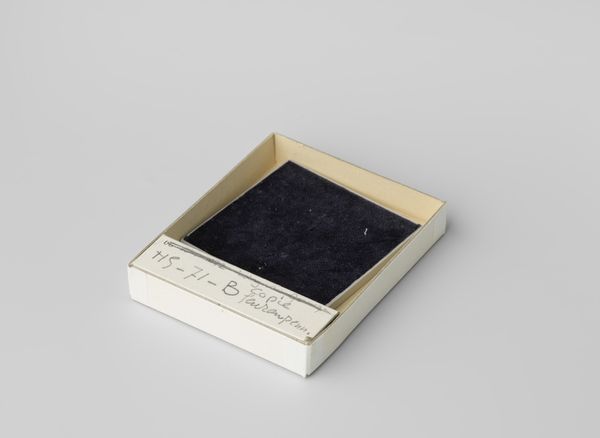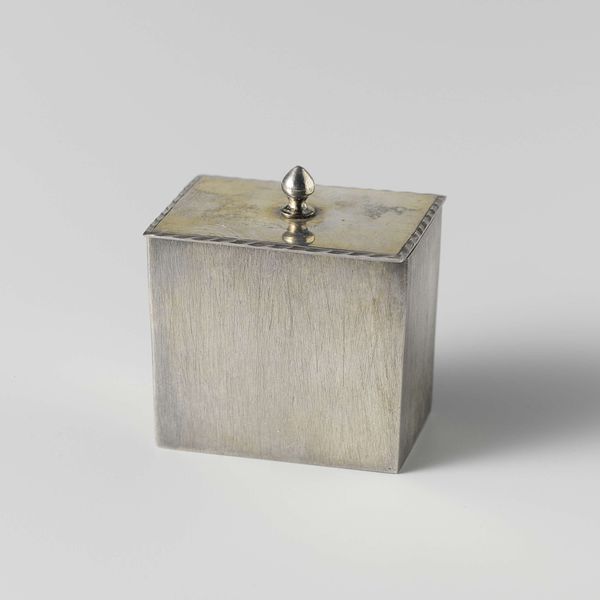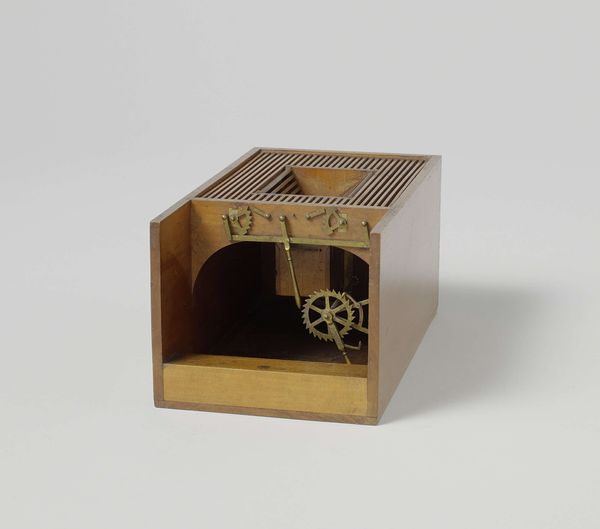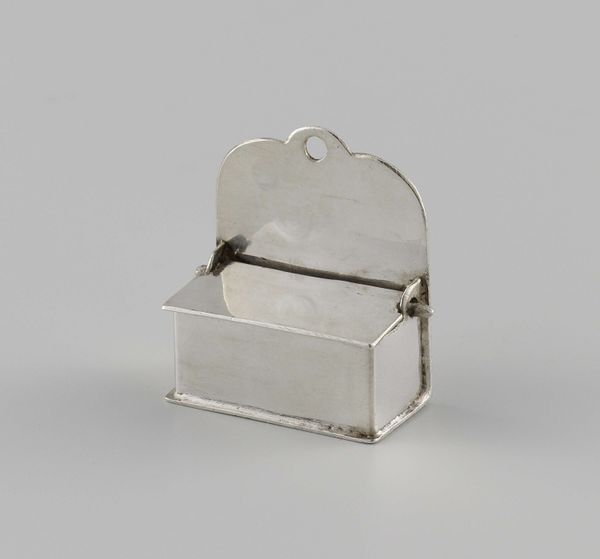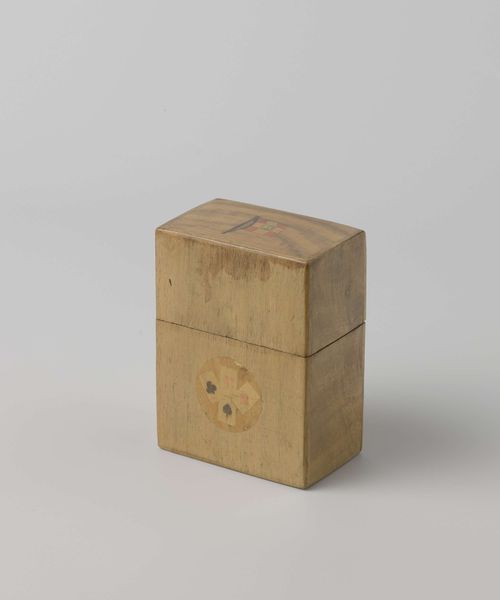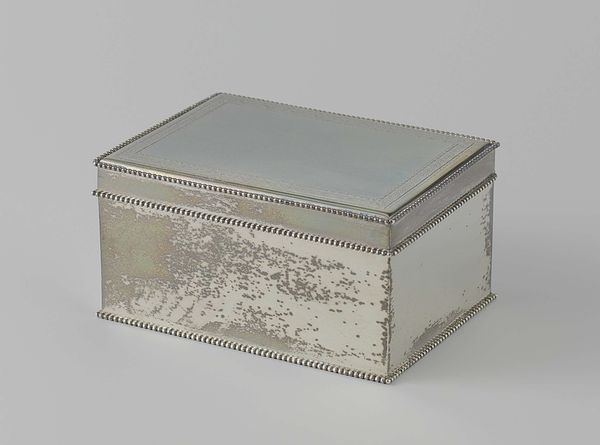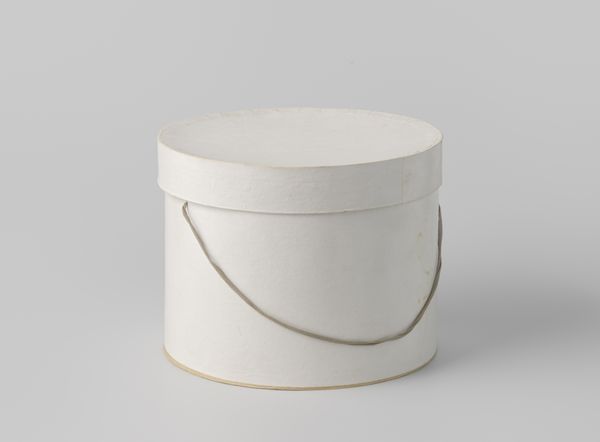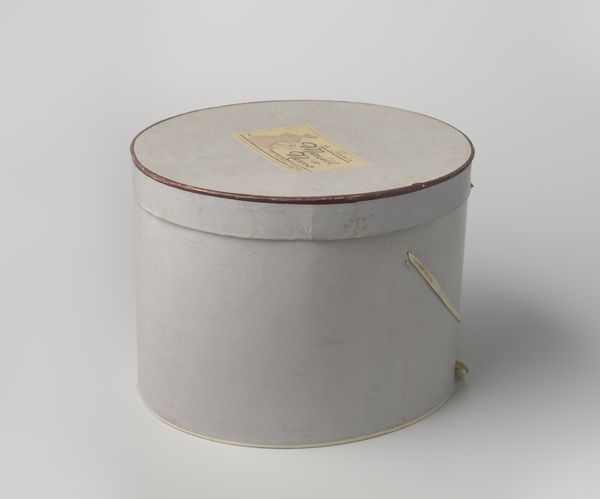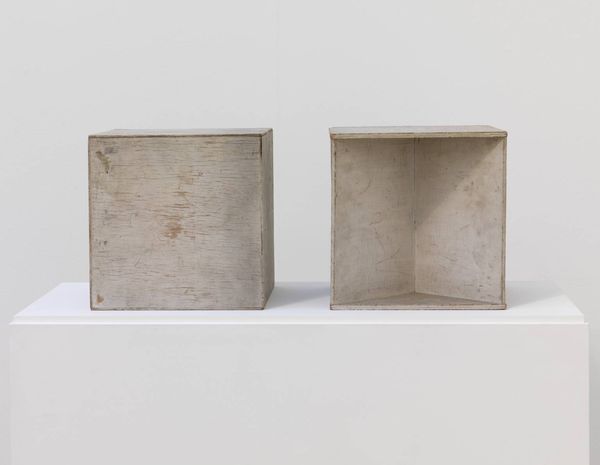
Dimensions: height 10.3 cm, width 8.8 cm, depth 6.1 cm, weight 362.0 gr
Copyright: Rijks Museum: Open Domain
This small, rectangular tea caddy was made in the Netherlands by Reynier Brandt in the 18th century, using silver. The simple geometric form shows the metalworker’s skill in manipulating the material. Notice how the flat planes of the box contrast with the rounded pearl-like beads lining its edges. These refined details transform the functional into the precious. Silver was the choice material for luxury items like this tea caddy because of its malleability and association with wealth. Tea itself was also a valuable commodity in the 1700s, imported from afar and enjoyed by the privileged. The act of locking tea away underscores its preciousness. Ultimately, this object is a testament to the social rituals and global trade that defined the era. By focusing on materials, making, and context, we start to understand the full meaning of an artwork, challenging traditional distinctions between fine art and craft.
Comments
No comments
Be the first to comment and join the conversation on the ultimate creative platform.

